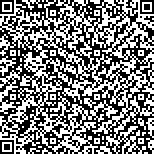| 引用本文: | 丁玉,宋秀贤,曹西华,俞志明.不同类型改性粘土去除米氏凯伦藻(Karenia mikimotoi)后絮体中细菌变化特点[J].海洋科学,2021,45(7):46-56. |
| |
|
| |
|
|
| 本文已被:浏览 1128次 下载 456次 |

码上扫一扫! |
|
|
| 不同类型改性粘土去除米氏凯伦藻(Karenia mikimotoi)后絮体中细菌变化特点 |
|
丁玉1,2,3,4, 宋秀贤1,2,3,4, 曹西华1,2,4, 俞志明1,2,3,4
|
|
1.中国科学院海洋研究所 海洋生态与环境科学重点实验室, 山东 青岛 266071;2.青岛海洋科学与技术试点国家实验室 海洋生态与环境科学功能实验室, 山东 青岛 266237;3.中国科学院大学, 北京 100049;4.中国科学院海洋大科学研究中心, 山东 青岛 266071
|
|
| 摘要: |
| 改性粘土能通过絮凝作用去除水体中的赤潮生物,大量的微藻在短时间沉降到底层,对底层环境中细菌群落组成及其功能产生的影响尚未见报道。本研究采用16S rDNA高通量测序技术,分析了两种类型改性粘土——聚合氯化铝改性粘土(MCⅠ)和硫酸铝改性粘土(MCⅡ)处理后的米氏凯伦藻(Karenia mikimotoi)絮体中细菌群落随时间的变化情况。实验结果显示,两种改性粘土对米氏凯伦藻的絮凝去除过程基本在3 h内完成,并且絮体中细菌密度均随时间的推移不断增长。但不同类型改性粘土对细菌群落结构与功能产生不同的影响,MCⅠ组主要以Stenotrophomonas为主,MCⅡ组中Celeribacter占比较高。进一步分析发现两个实验组的细菌功能均以化能异养为主,但MCⅠ组中,与硝酸盐还原、硝酸盐呼吸以及固氮等功能相关的细菌有较高丰度;在MCⅡ组中,具有硫和硫化合物氧化、以及亚硫酸盐氧化等与硫转化功能有关的细菌占比较高。另外,还初步分析了改性粘土治理后底层絮体中细菌群落的变化特征与有机质含量及营养盐变化的关系,研究结果既能完善改性粘土技术的生态环境效应研究,也将为粘土的生物改性提供理论支持。 |
| 关键词: 改性粘土 赤潮 细菌密度 细菌群落结构 |
| DOI:10.11759/hykx20200312001 |
| 分类号:X55 |
| 基金项目:国家自然科学基金项目(41976148);山东省重大科技创新工程项目(2019JZZY010808);2019年度“泰山学者攀登计划”项目 |
|
| Variation of bacteria in flocs after removal of Karenia mikimotoi by different types of modified clay |
|
DING Yu1,2,3,4, SONG Xiu-xian1,2,3,4, CAO Xi-hua1,2,4, YU Zhi-ming1,2,3,4
|
|
1.CAS Key Laboratory of Marine Ecology and Environmental Sciences, Institute of Oceanology, Chinese Academy of Sciences, Qingdao 266071, China;2.Laboratory of Marine Ecology and Environmental Science, Pilot National Laboratory for Marine Science and Technology (Qingdao), Qingdao 266237, China;3.University of Chinese Academy of Sciences, Beijing 100049, China;4.Center for Ocean Mega-Science, Chinese Academy of Sciences, Qingdao 266071, China
|
| Abstract: |
| The red tide in water can be removed by flocculation of modified clay. However, no study has reported on the effects of bacterial community composition and function in flocs after a large number of algae settle at the bottom within a short time. We used high-throughput sequencing methods to identify changes in the bacterial community in the settled Karenia mikimotoi flocs treated with two types of modified clay, i.e., polyaluminum chloride and aluminum sulfate modified clays (termed MCⅠ and MCⅡ, respectively). The flocculation removal process of K. mikimotoi by modified clay was completed within 3 h, and the bacterial density in the settled flocs increased continuously over time. Moreover, the structure of the bacterial community of the settled flocs was different, with Stenotrophomonas and Celeribacter as the main genera in the MCⅠ group and MCⅡ group, respectively. Chemoheterotrophy and aerobic chemoheterotrophy were the dominant functions in the bacterial community of both MCⅠ and MCⅡ groups. However, nitrate reduction, nitrogen respiration, and nitrate respiration were most commonly observed in the MCⅠ group, while dark sulfur oxidation, dark oxidation of sulfur compounds, and dark sulfite oxidation were mostly observed bacterial functions in the MCⅡ group. The relationship between the changes in the bacterial community in flocs and the changes in organic matter and nutrients after removal by modified clay was also analyzed. Results of this study cannot only improve the understanding of the ecological and environmental effects of modified clay but also provide theoretical support for future studies of micro-modified clay. |
| Key words: modified clay red tide bacterial density bacterial community |
|
|
|
|
|
|
